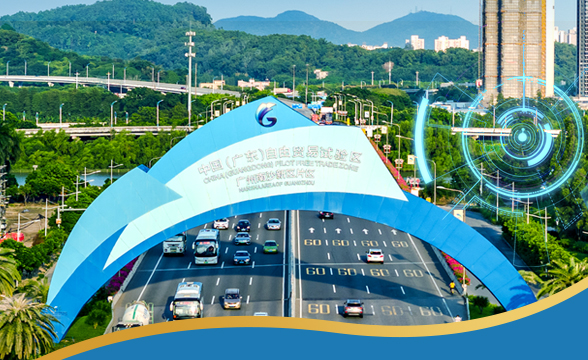New measures embody Bay Area policy concept
The development of the Guangdong-Hong Kong-Macao Greater Bay Area has entered into the stage of implementation after the promulgation of the Outline Development Plan for the Bay Area. Last Friday, the central government timely introduced eight policy measures at the second plenary meeting of the Leading Group for the Development of the Guangdong-Hong Kong-Macao Greater Bay Area.
The new measures are significant in that they will help Hong Kong residents traveling, working or living in these mainland partner cities. The flow of people and goods within the Bay Area, especially between the mainland cities and the two special administrative regions, will be further strengthened. But the introduction of those measures has far more profound implications.
First of all, the direction and principle of Bay Area policies are further strengthened. There should be a new and crucial concept called "Bay Area policy", to specifically serve the purpose of developing the Bay Area. Unlike the previous favorable policies designated for pilot implementation and specific groups, the Bay Area policy will be a well-planned and institutional change for all the cities within the region. Due to its nature, the systems will require closer coordination and more active participation among governments from different levels and different cities.
The principle of the Bay Area policy has become much clearer with the introduction of the latest measures - namely "less silt, more flow". For instance, measures supporting higher education institutions and scientific research institutes from Hong Kong and Macao to participate in projects under Guangdong's technology programs will further facilitate the flow of talents and research-related materials. The most remarkable measure is the one that supports the open recruitment of Hong Kong and Macao residents by public institutions in the Bay Area. This implies that the central government welcomes Hong Kong and Macao people to engage in the public administration of the Bay Area.
The second implication is that it recalls the impact of the free trade zones. China (Guangdong) Pilot Free Trade Zone, consisting of Nansha, Hengqin and Qianhai, was officially set up in 2014 as high-quality gateways for opening up the mainland market to the outside world. However, since the introduction of the idea of the Bay Area several years ago, there have been questions about whether the role of the free trade zones will diminish. The introduction of the latest favorable measures has given us a clear answer. The favorable tax policy for Hong Kong and Macao residents and the policy of encouraging youth innovation and entrepreneurship in mainland cities in the Bay Area are actually the products of the free trade zone implementation. The former policy was initially introduced by Hengqin in 2012, then by Qianhai and Nansha later; the latter has been implemented in the Qianhai Shenzhen-Hong Kong Youth Innovation and Entrepreneur Hub since 2014. That implies the free trade zones are proceeding well in their pilot implementation.
The free trade zones can continue to play a vital role in the development of the Bay Area. The experience of implementing these favorable policies in the free trade zones should be thoroughly reviewed before they are implemented in the whole Bay Area. For example, the favorable taxation procedures can be further streamlined for the convenience of the applicants. Moreover, the free trade zones should test-run more bold policies, especially concerning the flow of capital and social services in the future.
Last but not least, the efficiency of the Bay Area planning has been highlighted by the introduction of the new measures. These measures are introduced as soon as they become practicable. For instance, the latest modification of the method for calculating the 183-days threshold for Hong Kong and Macao residents to file income tax on the mainland, which excludes any stay of fewer than 24 hours on the mainland from calculation, is practicable only after the completion of the necessary transport infrastructure for achieving a one-hour living circle in the Bay Area. In anticipation of the upcoming opening of the Liantang/Heung Yuen Wai Boundary Control Point and the future operation of the Shenzhen-Zhongshan Bridge, new measures have also been introduced to implement immigration facilitation reform pilots schemes in the Bay Area and to expand the implementation scope of the connection with the Speedy Customs Clearance between customs administrations.
The introduction of these facilitating measures demonstrates that the central government is serious about the Bay Area plan. The principle is just like the well-known advertising slogan "less is more". With less silt, there will be more flow of people among the cities in the area.
(HK Edition 03/07/2019 page9)
All rights reserved. Presented by China Daily










